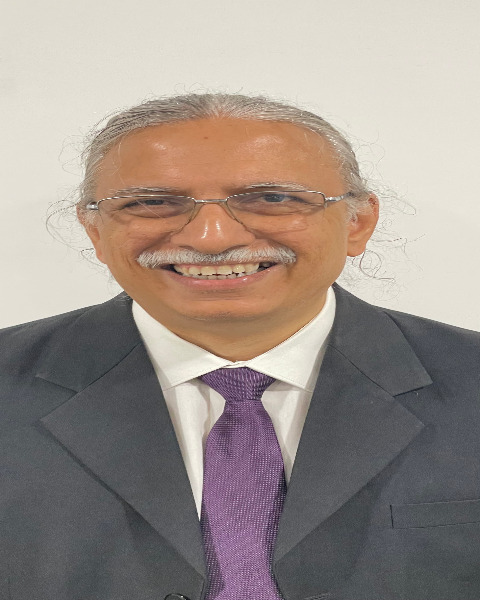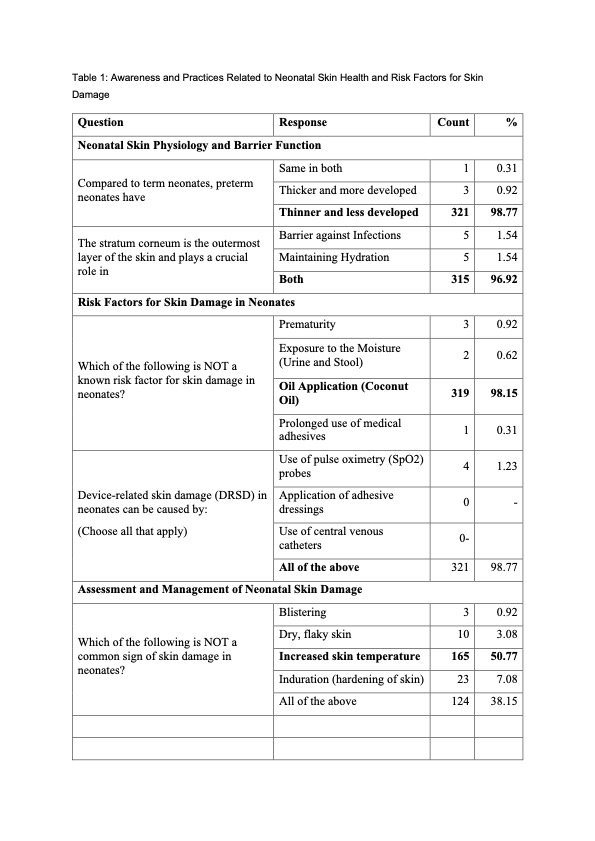Neonatal General 3: NICU Practices
Session: Neonatal General 3: NICU Practices
550 - Awareness of “Neonatal Skin Health” and “Prevention of Skin damage” among Pediatricians in Gujarat – a Survey of National Neonatology Forum India members.
Friday, April 25, 2025
5:30pm - 7:45pm HST
Publication Number: 550.3953
ADITYA HEMENDRA. BHATT, Bhaikaka University, Vadodara, Gujarat, India; Somashekhar M.. Nimbalkar, Bhaikaka University, Karamsad, Gujarat, India; Dipen V. Patel, Shree Krishna Hospital, Pramukhswami Medical College, Bhaikaka University, Gujarat, India, Anand, Gujarat, India; Reshma Pujara, Shree Krishna Hospital, Bhaikaka University, Anand, Gujarat, India; Mayur Kiran. Shinde, Department of Community Medicine, Bharati Vidyapeeth Deemed to be University Medical College, Pune, Maharashtra, India., Puy, Maharashtra, India

Somashekhar M. Nimbalkar, n/a
Professor
Bhaikaka University
Karamsad, Gujarat, India
Presenting Author(s)
Background: Neonatal skin health is critical for newborns, especially preterm infants, as their skin is thinner and more vulnerable to damage. Despite its importance, neonatal skin care often receives insufficient attention from healthcare providers. Pediatricians and neonatologists play a vital role in ensuring optimal neonatal skin health. However, gaps in knowledge and practices related to neonatal skin care may exist among these professionals, particularly in India, where limited data is available.
Objective: This study aimed to assess the awareness and practices of pediatricians and neonatologists in Gujarat regarding neonatal skin health and skin damage prevention among members of the National Neonatology Forum (NNF) India.
Design/Methods: A cross-sectional survey was conducted over five months (April-August 2024) using a semi-structured questionnaire distributed to 325 Pediatricians and neonatologists in Gujarat, India. The survey explored various aspects of neonatal skin care, including training quality, clinical exposure, confidence levels, and knowledge of risk factors for skin damage. Data were collected through Google Forms and analyzed to identify gaps in knowledge and practice.
Results: Of the 325 respondents, 98.77% correctly identified that preterm neonates have thinner and more fragile skin compared to term neonates. Almost all participants (96.92%) recognized the dual role of the stratum corneum in infection prevention and hydration maintenance. However, only 50.77% correctly identified that "increased skin temperature" is not a common sign of skin damage. Most respondents (96.92%) reported using a comprehensive approach to manage neonatal skin damage, while 97.23% acknowledged the potential consequences of skin damage, such as discomfort, pain, and infection risk. Most (98.15%) reported that oil application is not a known risk factor for neonatal skin damage. Additionally, 98.77% correctly acknowledged all aspects that can cause device-related skin damage (DRSD).
Conclusion(s): The study highlights a strong foundational understanding of neonatal skin health among pediatricians and neonatologists in Gujarat. However, significant gaps exist in recognizing specific signs of skin damage, particularly increased skin temperature. These findings underscore the need for ongoing education and standardized protocols to improve neonatal skin care practices and prevent complications associated with skin damage in neonates.
Table 1 (Part 1) Awareness and Practices Related to Neonatal Skin Health and Risk Factors for Skin Damage

Table 1 (Part 2) Awareness and Practices Related to Neonatal Skin Health and Risk Factors for Skin Damage
.jpg)
Table 1 (Part 3) Awareness and Practices Related to Neonatal Skin Health and Risk Factors for Skin Damage
.jpg)

